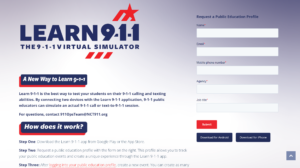Reflections on 2022
Written by Christy Williams, Director of 9-1-1
I was a little sad as I reflected on 2022. I can’t help feeling there is still a great deal of negativity, pain, and suffering in the world since the pandemic. It seems many people remain unsettled. The new normal isn’t normal for any of us yet, but we can all agree things have changed since 2020 and likely will never be the same.
As early adopters at NCT9-1-1, we embrace change. However, some of the changes we have seen are not positive and have become challenges for us to overcome. We are facing a staffing crisis in the Emergency Communications Centers (ECCs), in 9-1-1 administrative entities, and in local government in general. We are also dealing with a lot more mental health issues than ever before. The last two plus years have shown increased cases of anxiety, stress, depression, and Post Traumatic Stress Disorder in our industry. Of course, NCT9-1-1 and other 9-1-1 entities are working on strategies to mitigate these challenges.
With this in mind, my thoughts go to our word of the year for 2022 – connections. This has been so applicable as we talk about dealing with the challenges of our times. Many of the mental health issues are made better through talking to others, contact with friends and family, and building relationships. These connections have been vital this year. I found myself making lists of people I needed to check in on and being more aware of the needs of others around me. As an organization, we have refocused our energies to put the care of people first and to utilize technology to solve some of our people problems in addition to technical ones. In talking to our employees about the connections they have made and deepened this year, they report positive professional benefits to building a network and continued contact with these new connections. In our personal lives, I think it is important to build a support network to help aid in our resiliency. In addition to family and friends that stand by us and allow us to vent, we need cheerleaders, brainstorming buddies, accountability partners, and those that are free to be brutally honest with us. With a strong support network, we can get through the tough times knowing we have a group of people lifting us up when we need it and encouraging us in the good times.
I hope that our word for 2022 – connections – will not be forgotten in the new year, but instead will be a lifelong habit!
Of course, I want to highlight the positive changes and accomplishments this year at NCT9-1-1.
The primary focus for the North Central Texas Emergency Communications District (NCT9-1-1 or the District) during 2022 was the continuation of maintaining a consistent and reliable level of service for the region. While working within a limited projects budget due to building of reserves and the increasing costs for 9-1-1 services, NCT9-1-1 undertook several initiatives during the year to improve services for the population we serve. While the state did not pass a fee increase last session, it is becoming harder statewide to implement and sustain Next Generation 9-1-1 services on a fee that was set over 25 years ago when technology was very basic.
In May 2021, the Texas Legislature passed House Bill 2911 (HB 2911) amending Health and Safety Code Chapter 771 which established September 1, 2025, as the target date for “all parts of the state [to] be covered by next generation 9-1-1 service.” To assist with this goal, the NG9-1-1 Fund was established which includes $150,000,000 allocated to Texas. Staff successfully applied to the Commission on State Emergency Communications (CSEC), which serves as the administrative agency for the grant, and received an initial allocation of $8,989,701. NCT9-1-1 has been funded solely through the 9-1-1 service fee in the past and the grant world is largely new to our program. These funds are in a state NG911 account and must be fully dispersed to the districts, municipalities and regional planning commissions by December 2022 and spent by December 2024.
The Data Team worked with the Technology Team to implement the first Real Time Text (RTT) to RTT 9-1-1 call in the nation at the Hood County Sheriff’s Office, where this service has been implemented with T-Mobile. Following the successful transition to our new Next Generation Core Services next year, the rest of the region will implement RTT to RTT on the new core system. It is anticipated that Verizon and AT&T will also be implemented in the same time frame or shortly thereafter. This is a great accomplishment following a five-year effort.
Staff coordinated another successful annual 9-1-1 Early Adopter Summit which invites 9-1-1 visionaries around the country to collaborate, share ideas, and hear the latest innovations in the industry. After having to host a virtual event in 2021, the planning committee and attendees enjoyed being able to once again meet in person, this year in Arlington.
NCT9-1-1 remains focused on the mental health of our telecommunicators, and the Operations Team developed a Critical Incident Stress Management (CISM) Team for the region. Telecommunicators from around the region and some NCT9-1-1 staff members were trained to provide peer support. The team had its first activation at the end of the year with an ECC in the region who dealt with the murder of a child in her small town following an Amber Alert and community search efforts.
NCT9-1-1 continues to operate the only telecommunicator academy in the state of Texas and graduated 37 new telecommunicators in Regional Telecommunicator Academies (RTAs) # 12 and #13. The Operations Team also started providing video training segments through social media this year with a new video series, “Recharge with Bret”. The series has been very popular and has covered many important topics to the 9-1-1 industry.
The GIS Team remains on track researching and exploring 3D mapping and Z-axis that will show elevation on 9-1-1 maps in the future. They also began working with the Strategic Services Team on an ISD mapping project that will help NCT9-1-1 gather floorplan and supplemental information for schools throughout our region in the future to help improve school and responder safety. The GIS Team worked with others in NCTCOG to upgrade our ESRI account to an Enterprise Agreement which will provide the district and the COG enhanced GIS services at a lower cost per year.
In 2022, the Technology Team’s main focus was on procuring a new Next Generation Core Services and call aggregation provider. The procurement was completed in Spring 2022 and a contract executed in September. Implementation has begun and is expected to be completed in 2023.
The District evolves by making enhancements to our planning processes which allows us to better project financial needs over the next several years. We refine and improve our strategic plan and this year there was a planning focus on gaining more telecommunicator feedback and engagement throughout planning and implementation of new projects. As more and more data is available, NCT9-1-1 is giving ECCs the option on what they want to receive.
In addition to technology and planning, NCT9-1-1 also focused on our people this year by creating a Culture Crew to drive the positive culture of our staff through event and engagement planning. We have also piloted a program for staff called PRINT that teaches the why of you. PRINT assessments reveal our unconscious motivators and triggers so that we can be more fulfilled, achieve full potential, and function at our best, as well as learning how to better understand and communicate with our co-workers. As an organization, we have committed to working on improvements in the areas of recruitment and retention as well as succession planning. Many new initiatives have been planned and are in various stages of implementation. We recognize the care of our people (who are our greatest assets) must be a priority for us to be able to continue our mission of saving lives and making a difference!
As we move away from reflection on 2022 to anticipation of a new year, the word of the year for 2023 is “encouragement” because we all need more of it. We have learned to have grace for others throughout the pandemic and now I challenge each of you to take action by encouraging those around you. An authentic and sincere kind word can make such a difference. Most of us are appreciative of the work others do, especially in the 9-1-1 industry. However, we don’t always verbalize that appreciation when we should. Encouragement is also important to help others try new things and grow. Perhaps the most important value of encouragement is when someone is facing difficult times. We need to check on the welfare of those we love and work with on a regular basis. We all need encouragement and we should all give encouragement to others. With encouragement, we build a support network and increase our resiliency. Give it a try. . . Encourage someone today!






